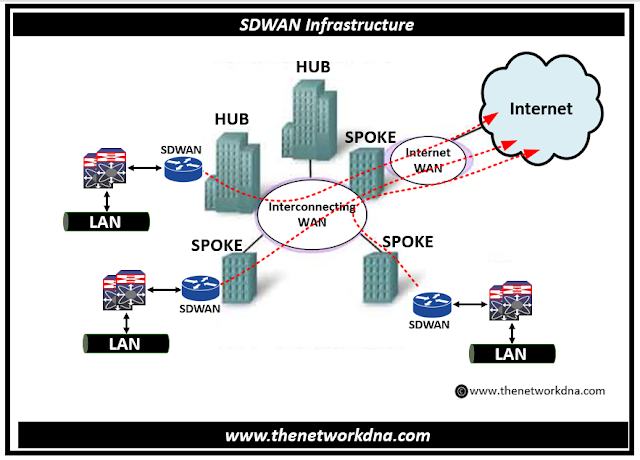What are Major Weaknesses of SD-WAN?
What are Major Weaknesses of SD-WAN?
SD-WAN, or Software-Defined Wide Area Network, is a network architecture that enables enterprises to manage and control network traffic from a single place.
It offers an adaptable and scalable solution for connecting remote offices, branch offices, and data centers. However, there are certain significant vulnerabilities in SD-WAN that must be addressed. In this blog post, we'll look at the top six weaknesses of SD-WAN.
Fig 1.1- SD-WAN Infrastructure
1. Complexity in Configuration
SD-WAN configuration can be complex and time-consuming for IT managers who are unfamiliar with the technology. This might cause network issues and downtime when changes must be performed fast or new devices are introduced to the network.
2. Limited Support for Legacy Applications
Some SD-WANs may not support legacy applications such as VPNs or firewalls that were once utilized by enterprises but have since been supplanted by newer technologies such as Wi-Fi 6E and 5G networks. This can reduce the usefulness of SD-WANs in businesses where legacy apps are still commonly utilized.
3. Public Internet provisioning
Most SD-WAN offerings are provisioned through the open internet, with no end-to-end quality of service (QoS) for traffic flow. This can be difficult, particularly for global providers with multiple ISPs.
4. Limited Bandwidth control
Another disadvantage of SD-WAN is its limited bandwidth control capabilities. While it can minimize bandwidth utilization for specific apps or services, it cannot ensure that all users have constant access to high-speed internet connections.
5. Lack of Integration with Other Technologies
Several SD-WANs might not work well with different technologies such as cloud computing platforms or IoT devices, making it difficult for businesses to effectively leverage these technologies without compromising performance or security standards set by traditional networking solutions.
6. Layer 2 Support not available
Conclusion
- Finding the Right SD-WAN Vendor for Your Business
- The Evolution: Exploring the Origins of SD-WAN discussions
- Discover the Power of Multitenancy with Versa SDWAN!
- Introduction to Silver-Peak SDWAN Solution
- Introduction to VeloCloud SD-WAN Solution
- Introduction to Palo Alto's Prisma (CloudGenix) SDWAN
- Introduction to Fortinet SDWAN








